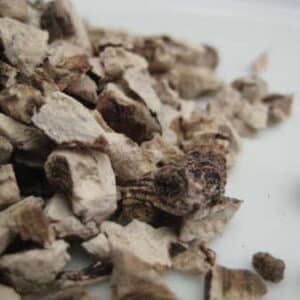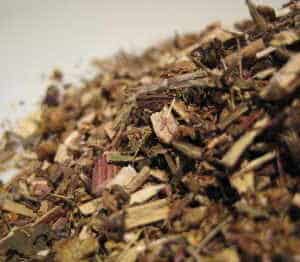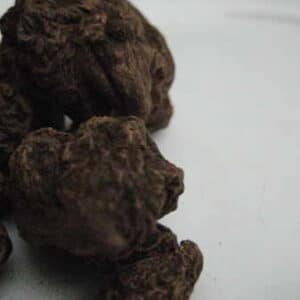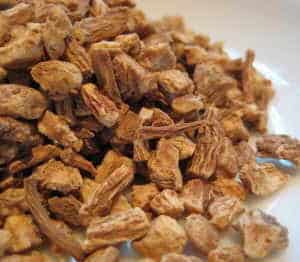Wild Yam Root (Cut) – Dioscorea villosa
£8.50
Wild Yam Root Cut
Dioscorea villosa
Also known as Colic Root or Rheumatism Root
100 grams
Wild Angelica Root, Wild Yam Root and wild Rhubarb Root will all occasionally show signs of boring into the root by insects whilst the plant has been growing. They are all WILD after all. You need not be concerned as all our plant material is checked for microbial activity and a phytosanitary certificate issued upon its clearance. The small holes you may or may not see were made whilst the plant was growing and the material you have purchased is entirely free of contamination.
Wild Yam Root (Dioscorea villosa) has a long history of usage in Central America, and was popular amongst the Ancient Aztec and Maya people primarily for pain relief and is also known as Colic Root or Rheumatism Root. One of the constituent parts of the plant has in recent years become important as a starting point for the synthesising of progesterone (one of the main female sex hormones) and also cortisone. The progesterone synthesised from wild yam was subsequently used in the manufacture of the first contraceptive pill.
Traditional Uses for Wild Yam Root:-
The Root was used by Native Americans for women in North and Central America experiencing menstrual problems as a relaxing remedy for painful menstruation, ovarian pain and to alleviate cramps. Many women have found this a useful herb during the menopause to this day.
The root of the plant is anti-inflammatory and has anti-spasmodic action, it has been regularly used to ease the pain and stiffness associated with arthritis and rheumatism hence one of its alternative names.
It is used for muscle spasms and pain and due to the high levels of plant steroids, the wild yam has been effective in pain relief for many centuries, and is also effective in the relief of digestive problems such as colic, irritable bowel syndrome and diverticulitis.
Constituents in Wild Yam Root:-
While the diosgenin found in wild yam created quite a stir in the 1990s as a cure ( that was what it was termed as at the time) for menopausal disorders and other symptoms of aging in women, the plant itself has no proven hormonal action, nor have any studies shown it to be effective in treating hormone related disorders. It is true that diosgenin can be converted into steroidal compounds, which are then used in the chemical synthesis of progesterone, but this is in the laboratory and not in the human body. There is essentially no scientific evidence of wild Yam’s effectiveness in treating menopausal symptoms or osteoporosis. Although many individuals claim relief of symptoms such as vaginal dryness with the use of progesterone creams, some of which contain an extract of Dioscorea villosa , no well-designed studies have evaluated these creams. Moreover, many products that claim to contain natural progesterone actually contain synthetic medroxyprogesterone acetate (MPA).
| best-before | |
|---|---|
| harvest | |
| batch-code | |
| country-of-origin |





